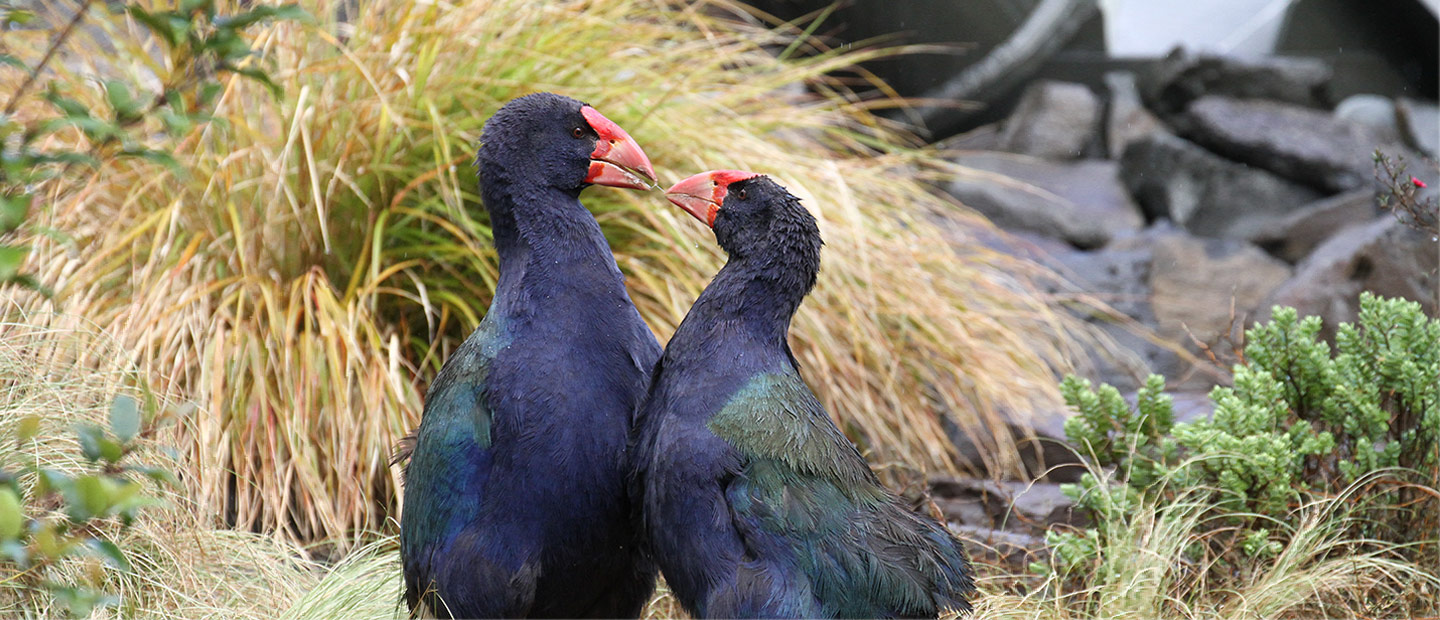Kuīni, a feisty young takahē who contracted a near-fatal infection, but went on to make a "miraculous" recovery at Auckland Zoo, is today starting a new life on Rotoroa Island with her mate, Anzac.
Department of Conservation (DOC) rangers at the Burwood Bush Takahē Rearing Unit near Te Anau took quick action when they couldn't find Kuīni during a routine check of her and Anzac’s enclosure in late April. Specialist takahē sniffer dogs were brought in to help track her down.
The four-year-old, found hidden and collapsed in long grass, was first taken to a local vet before an emergency flight up to Auckland Zoo's vet centre where she required weeks of specialist treatment at the centre’s intensive care unit.
"Kuīni was barely conscious and hypothermic on arrival - the result of a severe acute infection very quickly taking hold," says Auckland Zoo vet centre manager, Dr James Chatterton.
"Kuīni's journey from near-death back to health is pretty miraculous. She remained collapsed and barely conscious for the first 36 hours, and we thought the odds of her pulling through were extremely low, however, slowly but surely, she made amazing progress and eventually returned back to full health," says Dr Chatterton.
DOC's Operations Manager for Kākāpō and Takahē, Deidre Vercoe, says Kuīni's comeback, the result of a great team effort, is wonderful news for this unique and critically endangered endemic bird.
"There are currently just 280 takahē in the world, so every life is incredibly precious," says Ms Vercoe.
Kuīni and her mate Anzac's release onto Rotoroa today follows the release of young takahē pair Teichelman and Silberhorn onto the island last May. DOC’s partnership with Auckland Zoo and Rotoroa Island Trust (RIT) to have breeding takahē on pest-free Rotoroa is part of its Takahē Recovery Programme goal to establish 90 breeding pairs of takahē at safe sites throughout New Zealand by 2020.



